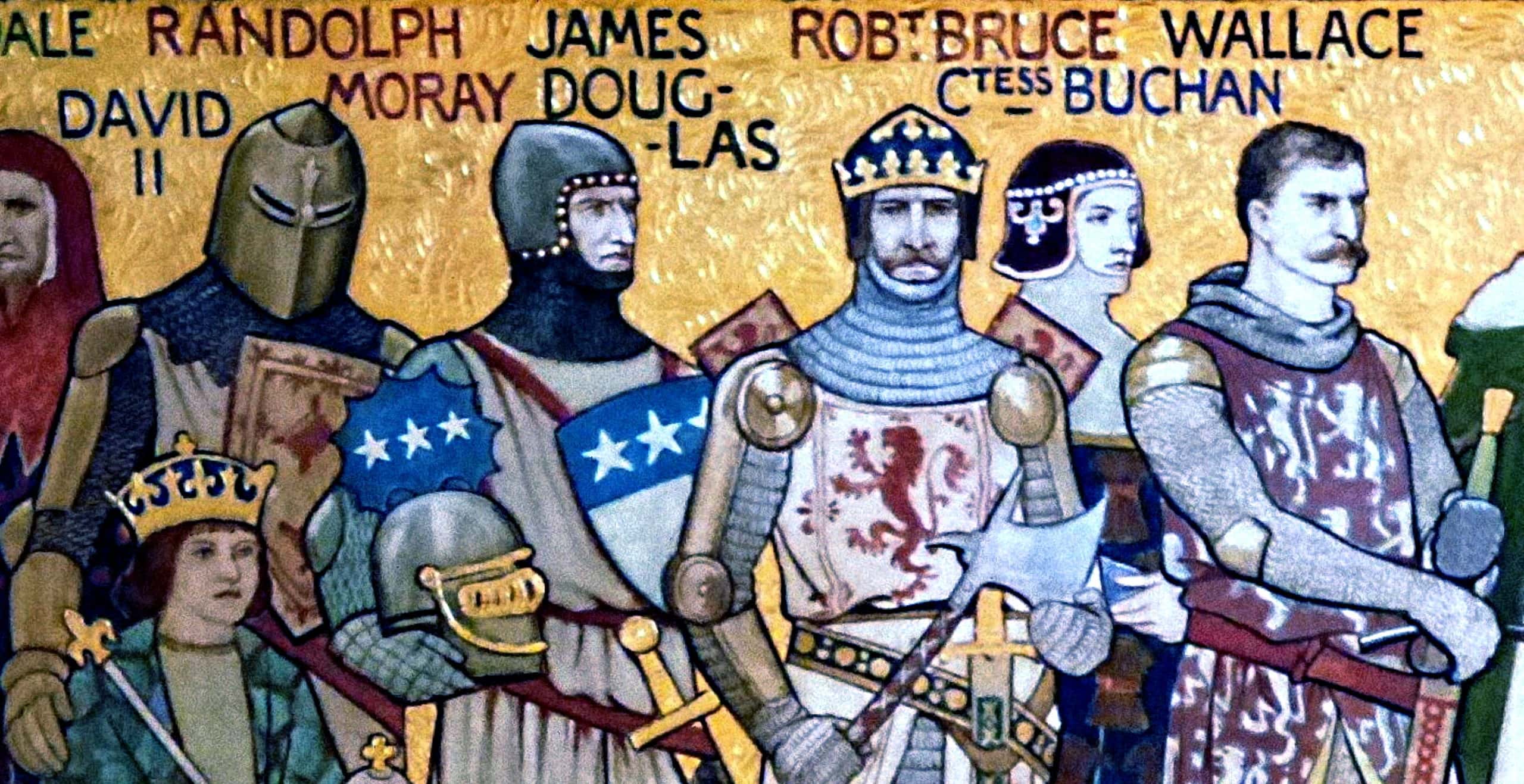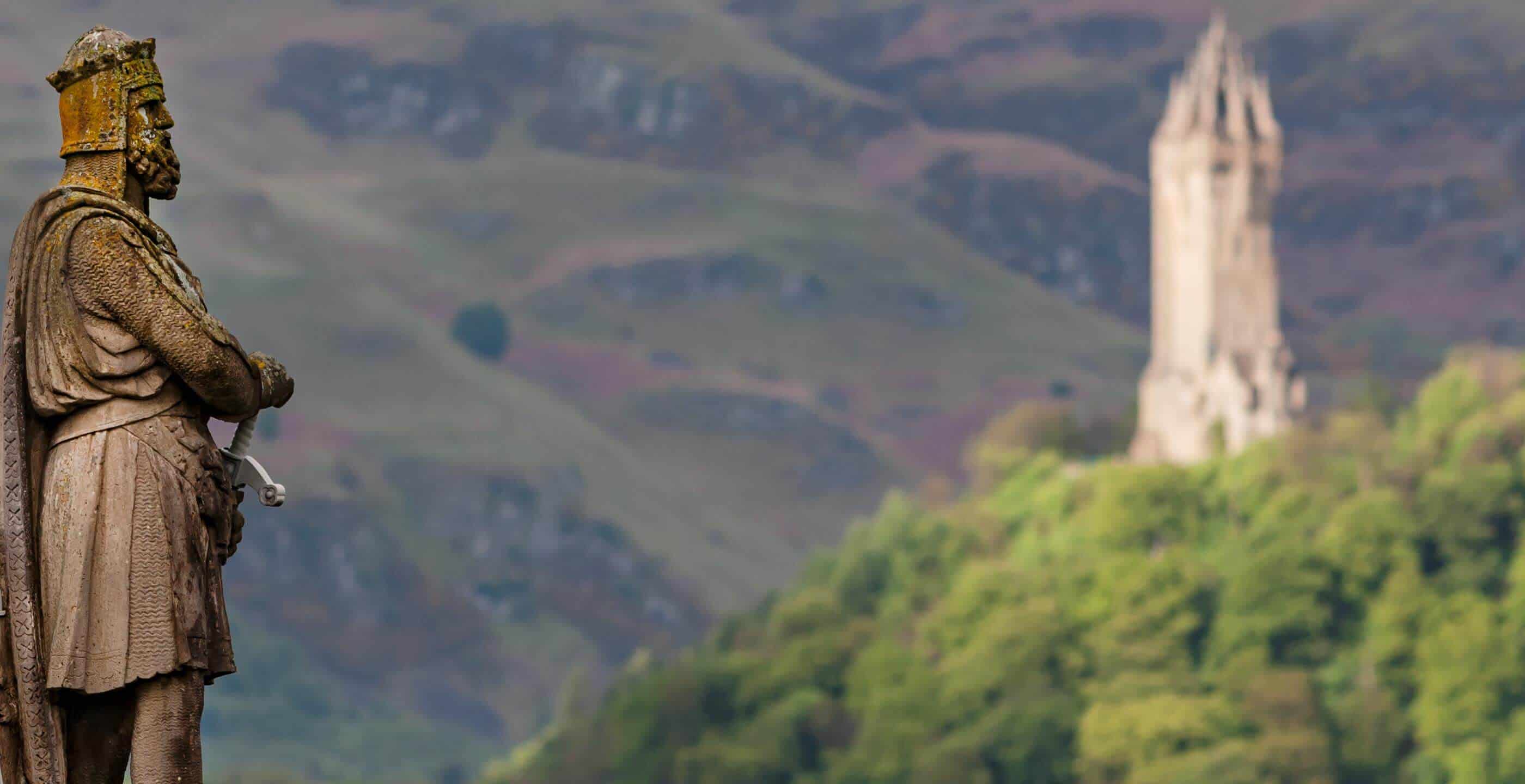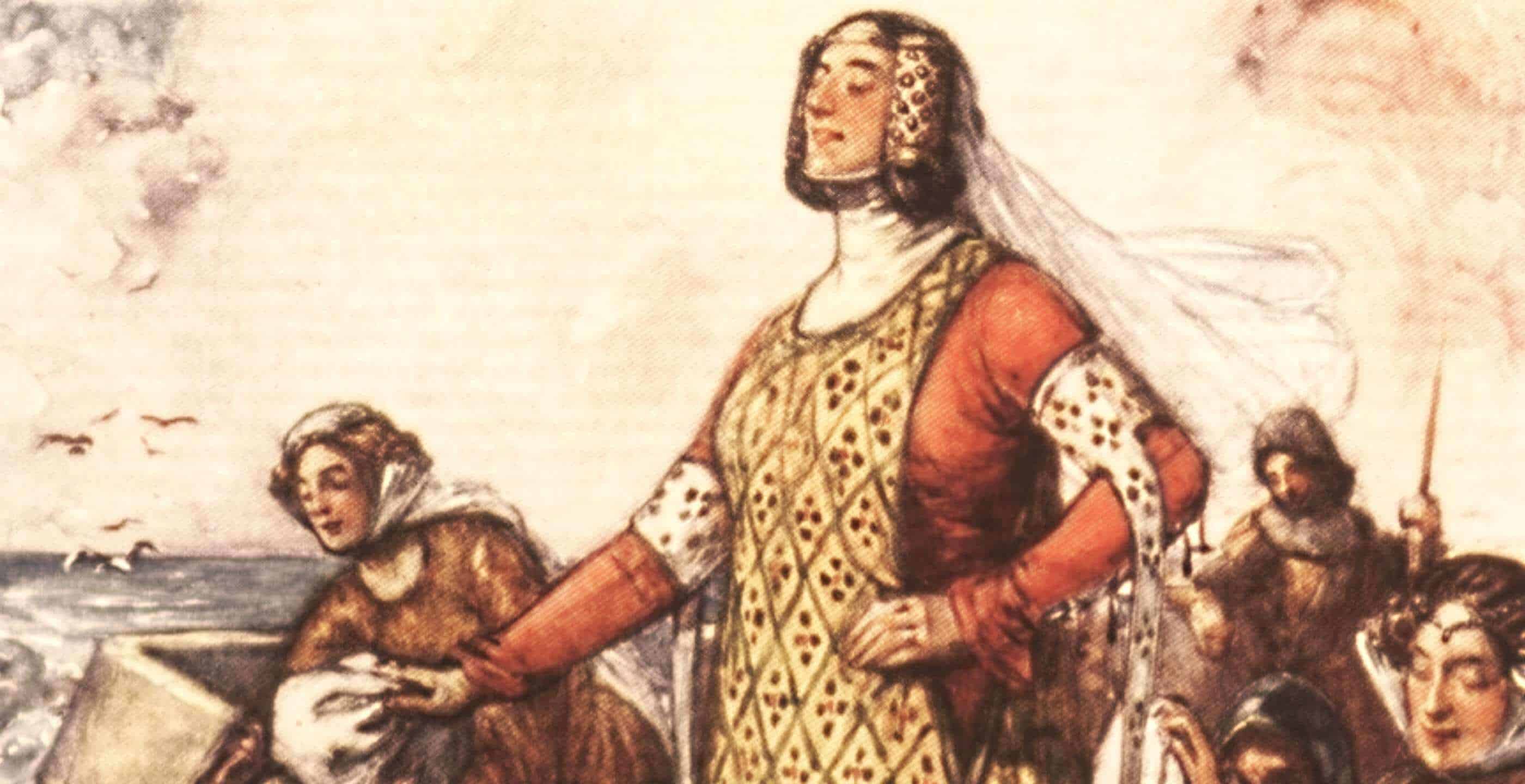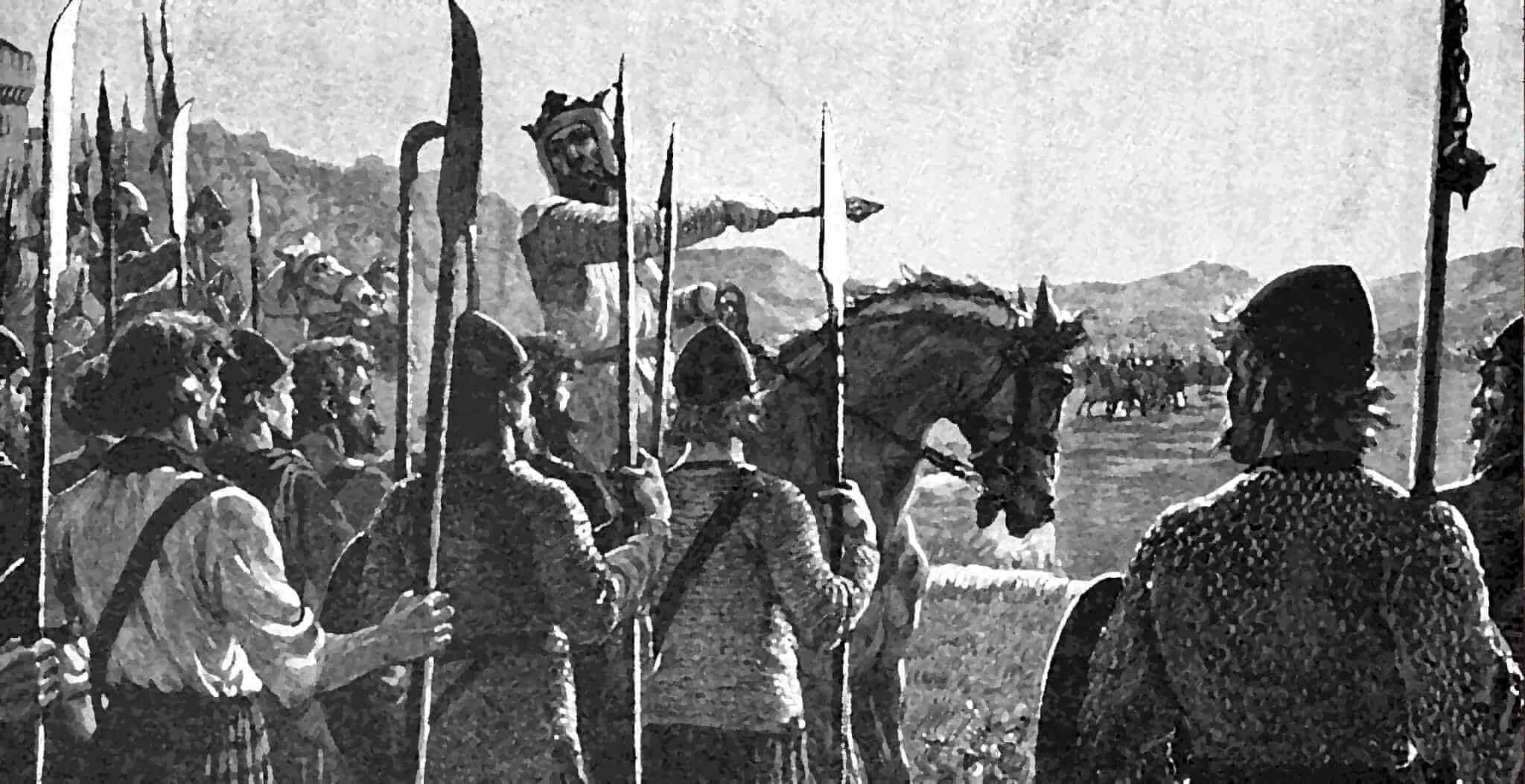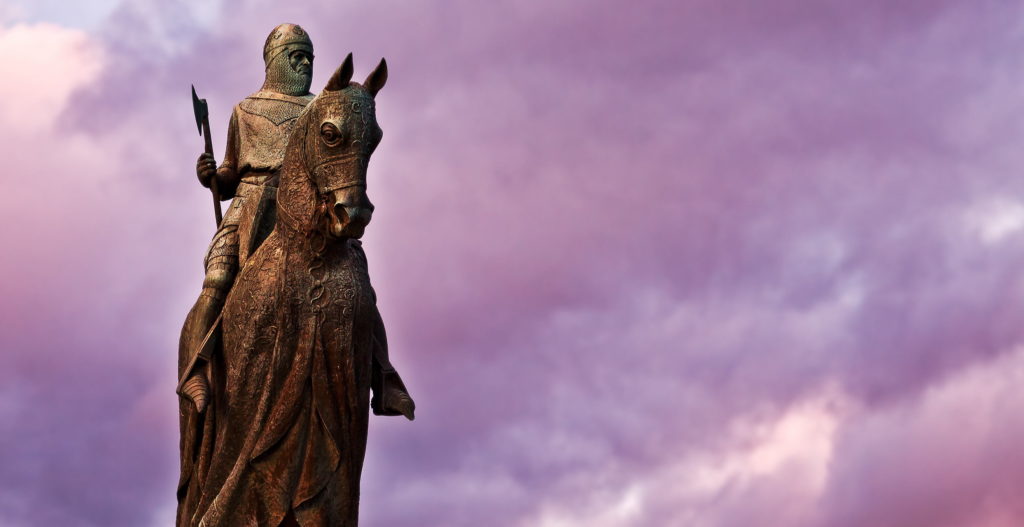The women associated with Robert the Bruce endured imprisonment and punishment during the First War of Scottish Independence. The Bruce women were captured by the English King Edward I, imprisoned in barbaric conditions, placed under house arrest and sent to convents for religious training by the English King, and all because they shared “a common danger of loyalty” to the newly crowned King of Scotland, Robert I.
After the Battle of Dalry in 1306, the Bruce family separated from each other for their own safety during the war. Robert Bruce and three of his brothers; Edward, Thomas and Alexander fought against the English King, whilst Robert’s youngest brother Nigel took the Bruce women to Kildrummy Castle for their own safety. The women were discovered by the English King’s forces and captured. They were all separated and sent to various locations as prisoners and hostages against their King, Robert.
The Scottish Queen, Elizabeth de Burgh was taken to Burstwick, Holderness to be placed under house arrest. Her father was an Irish noble on the side of Edward I of England, and therefore her father was able to make her situation more comfortable than perhaps the circumstances of her fellow ladies. Elizabeth’s marriage was also arranged by the English King Edward I for the benefit of political aspirations of her father and the English King and therefore, she was not treated in a barbaric manner as a hostage as her circumstances were not of her own doing.
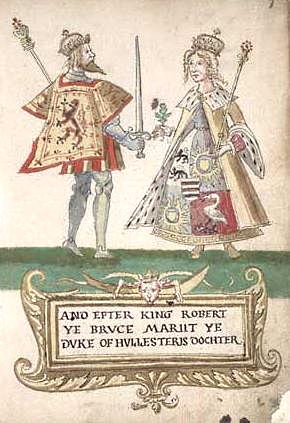
In the manor house, Elizabeth was assisted by “two elderly women, two valets and a page sent by her father.” This meant that for a prisoner of war and the wife of the Bruce who was considered at this time a rebel, she had a relatively comfortable imprisonment, especially compared to that of Bruce’s sisters, Bruce’s daughter Marjorie and the Countess of Buchan, Isabella MacDuff.
The danger Bruce’s daughter Marjorie faced simply by being Bruce’s daughter was large and so when she was captured alongside her step-mother Elizabeth, Marjorie’s imprisonment initially appeared to be a bleak one as “initially King Edward ordered that twelve year old Marjorie de Bruce should be imprisoned in a cage on the Tower of London, but fortunately for her either the King was persuaded otherwise, or a glimmer of mercy prevailed”, as she was sent to a convent instead.”
Although placed in a convent, she was still a hostage of the King of England and separated both from her father and her step-mother Elizabeth. Marjorie’s mother Isabella of Mar had died in childbirth with Marjorie and Marjorie herself at this time was only twelve years old. Being a prisoner of war at such a young age must have been a terrifying experience for the young and at the time only heir of Robert the Bruce. Marjorie was held at a convent in Watton, East Yorkshire.
Bruce’s sisters both had very different experiences during their capture by the English. Christina Bruce faced a similar imprisonment to her niece Marjorie: she was placed in Gilbertine Nunnery in Sixhills, Lincolnshire as a prisoner of war. Her punishment of a lesser degree, suggests that she showed no threat to the English and was merely guilty by association and therefore, used as a prisoner and hostage against the Scottish King.
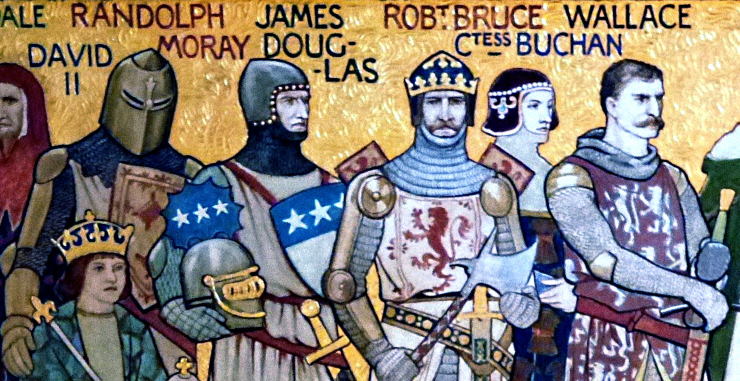
The experiences of Mary Bruce, sister of Robert Bruce and the Countess of Buchan, Isabella MacDuff were brutal and cruel in comparison to that of their fellow women. Their conditions were barbaric even in the standards of medieval punishments for women. Undoubtedly in the eyes of the English Isabella, unlike the other Bruce women, was guilty of elevating Robert Bruce and his kingship and actively acting against Edward I.
Isabella MacDuff had taken it upon herself to crown Robert Bruce King, in the absence of her father. Her role in this made her guilty of acting in a rebellious nature when captured by the English and therefore, the punishment she received was deemed worthy for her crimes. Sir Thomas Gray’s account of the events of medieval Scotland also demonstrates how the crowning and subsequent rise of Robert Bruce ensured a terrible fate upon Isabella, for her role in his enthronement, stating that “the countess was taken by the English” after the siege of Kildrummy in which Neil Bruce lost his life, “and brought to Berwick;… she was put in a wooden hut, in one of the towers of Berwick Castle, with criss-crossed walls so that all could watch her for a spectacle.” Whilst, traditionally women were captured in medieval war for the purpose of hostages and ransoms, Isabella’s fate was deemed to be of her own doing and for her own actions and not just because of her association to the newly crowned King of Scotland.
The cage punishment was barbaric and would have been an experience of pure suffering for the Countess. Historian McNamee argues that both Isabella and Mary Bruce, Robert’s sister were subject to this punishment and were punished in “the most inhumane, even by the standards of the time.” Even the cage’s location in the case of Isabella MacDuff was a calculated manipulation by the English King to punish her for elevating Robert the Bruce. The purpose of Isabella’s location at Berwick in these barbaric conditions is also significant in understanding the emotional experiences of the Bruce women. Berwick’s location meant that Isabella would be able to view her beloved Scotland across the sea, to be constantly reminded during her imprisonment of the catalyst to her experiences – the crowning of Bruce. Isabella MacDuff arguably suffered most of the Bruce women as she was never to return to Scotland and never freed. It is believed that she died in 1314 before Robert could secure the Bruce women’s releases from captivity.
Mary Bruce, Bruce’s other sister also faced the cage punishment. Although little is known about Mary in general, it is argued that Mary Bruce must have somehow angered the English king to have been given such a punishment, as her fellow family members did not have to endure such barbarity. Mary’s cage was at Roxburgh Castle, but it is believed that it is possible that she was moved to a convent later in her imprisonment as there is no record of her staying at Roxburgh in later years and she was released with the other Bruce women in 1314 after Robert Bruce’s victory at the Battle of Bannockburn.
By examining the differing positions of the Bruce women during the Scottish Wars of Independence it can be seen that medieval women experienced the horrors and dangers of war as much as the men who fought the wars. In the case of the Bruce women they suffered long enduring punishments simply for their relationship to the man leading the Scottish side of the war.
By Leah Rhiannon Savage, aged 22, Master’s Graduate of History from Nottingham Trent University. Specialises in British History and predominantly Scottish History. Wife and Aspiring Teacher of History. Writer of Dissertations on John Knox and the Scottish Reformation and The Social Experiences of The Bruce Family during The Scottish Wars of Independence (1296-1314).
